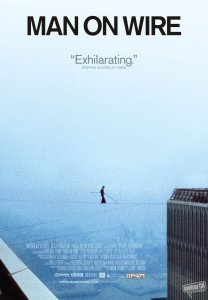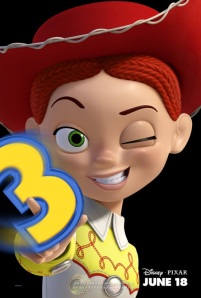Congratulations to the modern French classic Amelie (2001)!  American Cinematographer subscribers voted it as the best-shot film between the years of 1998 and 2008. The film, directed by Jean-Pierre Jeunet, is one of my favorites, and Bruno Delbannel’s whimsical cinematography is most definitely one of the reasons.
American Cinematographer subscribers voted it as the best-shot film between the years of 1998 and 2008. The film, directed by Jean-Pierre Jeunet, is one of my favorites, and Bruno Delbannel’s whimsical cinematography is most definitely one of the reasons.
The film’s title character is a young French waitress, played adorably by Audrey Tautou, who begins changing people’s lives. She plays matchmaker for her coworkers, helps a blind man cross the street, and sets up a little surprise for her lonely father that involves his garden gnome. While she makes a difference in others’ lives, Amelie struggles to make a difference in her own, as her shyness prevents her from pursuing love. The irony of Amelie is that viewing it is akin to opening a children’s pop-up book and getting lost inside, but the film has an R rating and deals with some adult situations and themes. And yet that occasional innuendo or naughty scene doesn’t detract from the movie’s whimsy. It still feels innocent and childlike. That’s rare.
The film is dreamy, with bright colors and quaint French locales. The camerawork is stunning. The close-up, high angle shots of Amelie create interesting angles and proportions that lend an element of fantasy to the film. The visuals becomes surreal and magical. The opening sequence, which features various playful shots of Amelie as a carefree child, is beautifully shot. I went through a phase after seeing this movie where my dream was to get an adorable bob haircut and wear Doc Martens and live in a chic Paris apartment and crack the tops of countless creme brulees with a spoon. The cinematography matches this feel-good charm.
If you haven’t seen Amelie, shame on you! It’s a must-see in my book, because it is such a wonderful blend of components, from acting to camerawork to art direction to screenplay and everything in between. It’s one of those rare films that just makes you smile from beginning to end. It’ll warm your heart.
Regarding the rest of the journal’s list for top cinematography, I think it’s a very interesting group of films, and I agree with many of the choices. Some entries are more unexpected than others. My favorites on the list include Eternal Sunshine of the Spotless Mind, Slumdog Millionaire, The Diving Bell and the Butterfly (which I would have placed even higher), The Lord of the Rings, and Pan’s Labyrinth.
Read the list of winners at Movieline: http://www.movieline.com/2010/06/was-amelie-really-the-best-shot-film-of-the-last-decade.php.


 How do you make a full-length documentary about a man tight rope walking between two skyscrapers, you ask? By mapping out all the tireless planning and obstacles that led him to what seems just short of a miracle. And in a playful, whimsical style of filmmaking that seamlessly blends real footage with reenactments and talking-head interviews. Let me introduce Man on Wire (2008).
How do you make a full-length documentary about a man tight rope walking between two skyscrapers, you ask? By mapping out all the tireless planning and obstacles that led him to what seems just short of a miracle. And in a playful, whimsical style of filmmaking that seamlessly blends real footage with reenactments and talking-head interviews. Let me introduce Man on Wire (2008).
